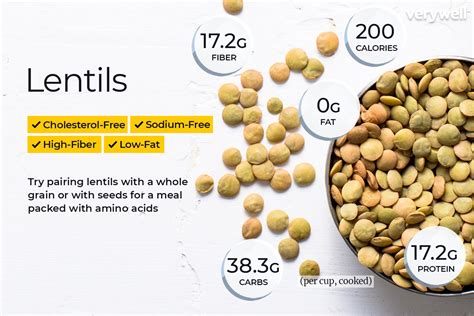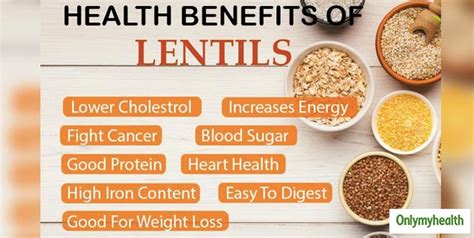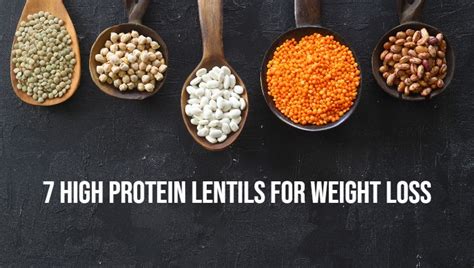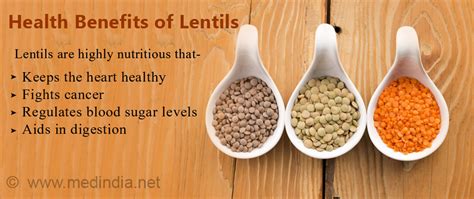Intro
Discover the nutritional benefits of lentils, rich in protein, fiber, and minerals, offering numerous health advantages, including digestive health and weight management, making them a nutritious addition to a balanced diet.
Lentils have been a staple food in many cultures for thousands of years, and their popularity continues to grow due to their exceptional nutritional value and versatility. These small, disk-shaped legumes are packed with protein, fiber, and various essential vitamins and minerals, making them an excellent addition to a healthy diet. In this article, we will delve into the world of lentils, exploring their nutritional benefits, types, and ways to incorporate them into your daily meals.
The importance of lentils in modern cuisine cannot be overstated. With the increasing awareness of the need for sustainable and healthy food options, lentils have become a favorite among health-conscious individuals, vegetarians, and vegans. They are not only a great source of plant-based protein but also rich in complex carbohydrates, fiber, and various phytochemicals that have been linked to several health benefits. Whether you are looking to improve your overall health, manage your weight, or reduce your environmental footprint, lentils are an excellent choice.
Lentils are also incredibly versatile, and their uses extend far beyond the traditional lentil soup. They can be used in a variety of dishes, from salads and stews to curries and veggie burgers. With their mild, slightly sweet flavor and soft texture, lentils can be easily incorporated into both traditional and modern recipes, making them a great ingredient for experimentation and creativity in the kitchen. Moreover, lentils are relatively inexpensive and can be stored for long periods, making them a practical choice for meal planning and budgeting.
Lentils Nutrition Facts

Lentils are a nutrient-dense food, providing a rich mix of vitamins, minerals, and macronutrients. One cup of cooked lentils contains approximately 230 calories, 18g of protein, 10g of fiber, and 40g of complex carbohydrates. They are also an excellent source of essential minerals like iron, potassium, and zinc, as well as B vitamins, particularly folate and thiamin. The high fiber and protein content in lentils makes them very filling, which can help with weight management and reduce the risk of chronic diseases like heart disease, diabetes, and certain types of cancer.
Types of Lentils
Lentils come in a variety of colors, each with its unique nutritional profile and culinary uses. The most common types of lentils include green, brown, red, yellow, and beluga lentils. Green and brown lentils are the most widely available and are often used in soups and stews. Red and yellow lentils are split and have a softer texture, making them ideal for curries and pureed soups. Beluga lentils, also known as black lentils, have a strong, earthy flavor and are often used in salads and side dishes.Health Benefits of Lentils

The health benefits of lentils are numerous and well-documented. Their high fiber content can help lower cholesterol levels, improve blood sugar control, and promote digestive health. Lentils are also rich in antioxidants and polyphenols, which can help protect against oxidative stress and inflammation, reducing the risk of chronic diseases. Additionally, the protein and fiber in lentils can help with weight management by keeping you feeling fuller for longer and reducing the need for unhealthy snacks.
Cooking with Lentils
Cooking with lentils is relatively simple and requires minimal equipment. They can be cooked on the stovetop, in a pressure cooker, or in a slow cooker, making them a great option for busy weeknights or meal prep. Lentils can be used in a variety of dishes, from traditional soups and stews to modern salads and veggie burgers. They can also be sprouted, which increases their nutritional value and makes them easier to digest.Lentil Recipes

There are countless lentil recipes to explore, from simple and comforting to complex and exotic. Some popular lentil dishes include lentil soup, lentil curry, lentil salad, and lentil veggie burgers. Lentils can also be used as a substitute for meat in dishes like tacos, chili, and Bolognese sauce. With their mild flavor and soft texture, lentils can be easily incorporated into both traditional and modern recipes, making them a great ingredient for experimentation and creativity in the kitchen.
Lentil Nutrition and Sustainability
Lentils are not only a nutritious food but also a sustainable one. They are a low-impact crop that requires minimal water and pesticides, making them an excellent choice for environmentally conscious consumers. Additionally, lentils are a great source of plant-based protein, which can help reduce greenhouse gas emissions and support sustainable agriculture. By incorporating lentils into your diet, you can help promote sustainable food systems and reduce your environmental footprint.Lentils and Weight Management

Lentils can be a valuable tool for weight management due to their high fiber and protein content. The fiber in lentils can help keep you feeling fuller for longer, reducing the need for unhealthy snacks and portion sizes. Additionally, the protein in lentils can help build and repair muscle tissue, which can help increase metabolism and support weight loss. Lentils are also relatively low in calories and rich in complex carbohydrates, making them an excellent choice for those looking to manage their weight.
Lentils and Digestive Health
Lentils are also beneficial for digestive health due to their high fiber content. The fiber in lentils can help promote the growth of beneficial gut bacteria, reduce symptoms of irritable bowel syndrome (IBS), and support healthy bowel movements. Additionally, lentils contain a type of fiber called prebiotic fiber, which can help feed the good bacteria in the gut, promoting a healthy gut microbiome.Lentils and Heart Health

Lentils can also help support heart health due to their high fiber and protein content. The fiber in lentils can help lower cholesterol levels, improve blood lipid profiles, and reduce blood pressure. Additionally, the potassium in lentils can help lower blood pressure, while the folate can help reduce homocysteine levels, a marker of cardiovascular disease. By incorporating lentils into your diet, you can help reduce your risk of heart disease and support overall cardiovascular health.
Lentils and Cancer Prevention
Lentils have also been linked to cancer prevention due to their high antioxidant and polyphenol content. The antioxidants in lentils can help protect against oxidative stress and inflammation, reducing the risk of chronic diseases like cancer. Additionally, the fiber in lentils can help promote the growth of beneficial gut bacteria, which can help support immune function and reduce the risk of cancer.Lentils and Diabetes Management

Lentils can also help support diabetes management due to their high fiber and protein content. The fiber in lentils can help slow the absorption of sugar, reduce blood sugar spikes, and improve insulin sensitivity. Additionally, the protein in lentils can help regulate blood sugar levels, reduce hunger, and support weight management. By incorporating lentils into your diet, you can help manage your blood sugar levels and reduce your risk of diabetes-related complications.
Lentils and Bone Health
Lentils are also beneficial for bone health due to their high mineral content. The calcium, magnesium, and potassium in lentils can help support bone density, reduce the risk of osteoporosis, and promote overall bone health. Additionally, the fiber in lentils can help promote the growth of beneficial gut bacteria, which can help support immune function and reduce the risk of bone-related diseases.Conclusion and Final Thoughts

In conclusion, lentils are a nutritious and versatile food that can provide numerous health benefits when incorporated into a balanced diet. With their high fiber and protein content, lentils can help support weight management, digestive health, heart health, and cancer prevention. They are also a sustainable food option that can help reduce greenhouse gas emissions and support environmentally conscious consumers. By exploring the various types of lentils, cooking methods, and recipes, you can make lentils a staple in your diet and reap the rewards of this incredible food.
We invite you to share your favorite lentil recipes, ask questions, or leave comments below. Whether you are a seasoned lentil lover or just starting to explore the world of lentils, we hope this article has provided you with valuable information and inspiration to incorporate lentils into your diet. Don't forget to share this article with your friends and family, and let's work together to promote sustainable and healthy food options for everyone.
What are the health benefits of lentils?
+Lentils are rich in protein, fiber, and various essential vitamins and minerals, making them an excellent addition to a healthy diet. They can help support weight management, digestive health, heart health, and cancer prevention.
How do I cook lentils?
+Lentils can be cooked on the stovetop, in a pressure cooker, or in a slow cooker. They can be used in a variety of dishes, from traditional soups and stews to modern salads and veggie burgers.
What are the different types of lentils?
+There are several types of lentils, including green, brown, red, yellow, and beluga lentils. Each type has its unique nutritional profile and culinary uses.
